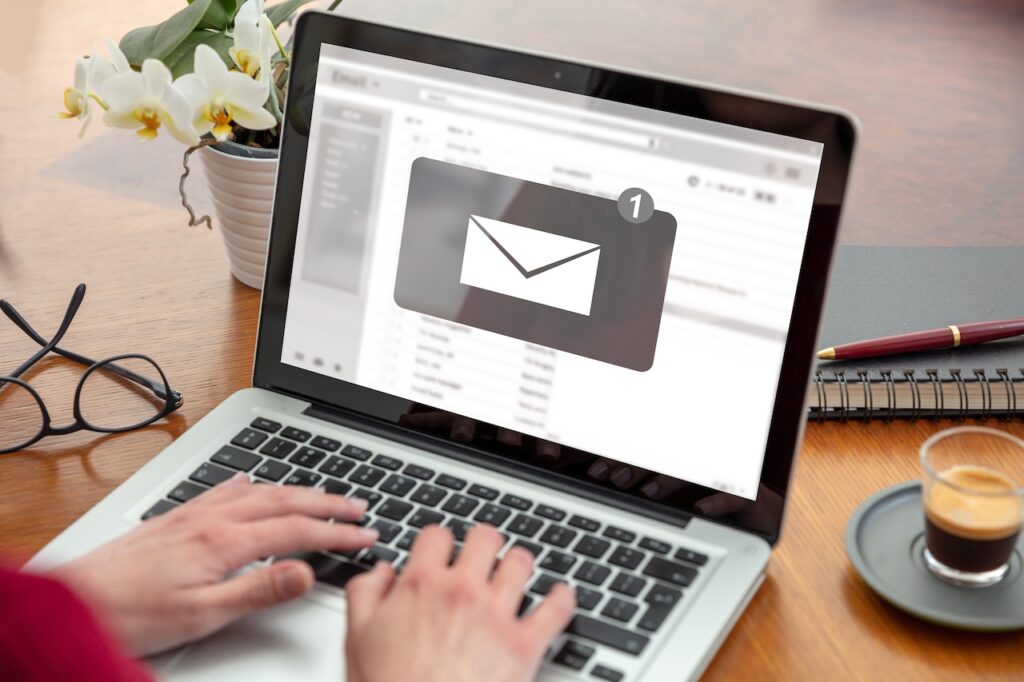
How often do you check your email? Whether it’s for work or personal use, most of us are constantly checking our inboxes throughout the day. However, with the rise of internet scams and phishing attacks, it’s important to be cautious when opening emails from unknown senders. Let’s discuss phishing prevention tips to protect yourself or your business from online fraud.
Phishing Prevention Tips in Each Key Area Of Your Email
While there are various types of phishing attacks, they all have one thing in common: the goal to deceive and manipulate users into giving away personal information or login credentials. To avoid becoming a victim and improve your phishing prevention, it’s important to be able to identify the red flags within the key areas of your email.
Here are the biggest warning signs to look out for in each section:
Sender’s Email Address
One of the first things to check when receiving an email from an unknown sender is their email address. Often, phishing emails will have a fake or slightly altered email address that may look similar to a legitimate one. For example, instead of ‘paypal.com’, it may be ‘paypall.com’.
Keep an eye out for these small differences and always double-check the sender’s email address before opening any attachments or clicking on links.
Subject Lines
Phishing emails often have subject lines that create a sense of urgency or panic in the recipient. They may claim that your account has been compromised, your payment is overdue, or you have won a prize. These tactics are used to get you to act quickly without thinking, which is often how victims fall for these scams.
Before opening an email with a suspicious subject line, take a moment to think about whether it makes sense or if it’s something you were expecting. The best phishing prevention in this case is to check your account on the actual website instead of clicking on any links within the email.
Email Content
The body of a phishing email may contain red flags indicating that the email is not legitimate. Look for the following:
- Spelling and grammar errors
- Inconsistent formatting
- Strange requests for personal information
- Threats of consequences if you don’t act immediately
- Offers that seem too good to be true
If any of these are present, it’s a strong indication that the email is not from a legitimate source. Do not reply or click on any links—instead, report the email as spam and delete it immediately.
Links and Attachments
One of the most common tactics used in phishing attacks is to include malicious links or attachments within the email. These can lead to fake websites that trick you into giving away personal information or downloading malware onto your device.
To improve your phishing prevention habits, hover over any links to see the full URL before clicking on them. If it looks suspicious or doesn’t match the supposed sender of the email, do not click on it. As for attachments, only open them if you were expecting them and they come from a trusted source.
Sender’s Name
Lastly, pay attention to the sender’s name. In some cases, the email address may be legitimate but the sender’s name is not. For example, you may receive an email from “Apple Support” with a fake email address. Always verify the sender’s name matches the email address before taking any action.
Unity IT Can Teach Your Employees to Spot Suspicious Emails
Phishing emails don’t just target individuals—they also attack businesses and their employees. That’s why it’s important to educate your team on how to spot suspicious emails and report them to prevent any potential security breaches.
At Unity IT, we offer cybersecurity training and support for your business. Our team can help you implement innovative tools that protect your company from cyber threats and keep your data safe and secure. Phishing prevention is always better than dealing with the aftermath of a successful attack. Partner with Unity IT to keep your business safe.

